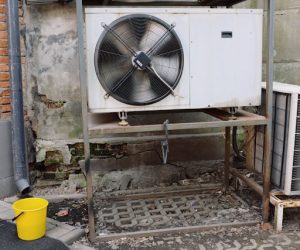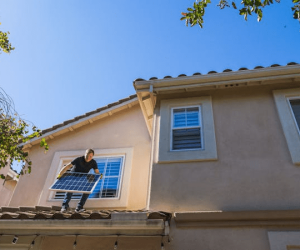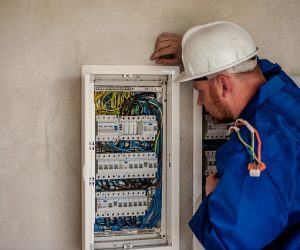Did you know that the solar energy storage battery market size is projected to grow to $20.01 billion by 2030?
As the world embraces sustainable energy, the shift to solar power has become crucial for many. One essential component of a solar setup is the lithium deep cycle battery. These batteries store and provide energy for long periods.
When it comes to selecting the perfect battery for your solar setup, the decision can be quite complex. To guide you through this process, let’s delve into the world of lithium deep cycle batteries. Continue reading to find out everything you need to know.
Understand Capacity and Voltage Requirements
Understanding your power needs is a crucial step in battery selection. The battery capacity is measured in ampere-hours (Ah). This determines how much energy your battery can store.
Your solar system’s voltage will dictate how many batteries you need to achieve the required voltage and capacity. If you have a 12-volt solar panel, you will need one lithium 12v battery. For higher voltages, multiple batteries can be wired in series to achieve the desired output.
Additionally, consider your daily energy consumption and how many days of autonomy you require. This will determine the overall capacity needed for your battery bank.
Know Your Battery Types
There are three main types of lithium deep cycle batteries: Lithium Iron Phosphate (LiFePO4), Lithium Nickel Manganese Cobalt Oxide (NMC), and Lithium Titanate (LTO). Each has its unique characteristics that make them suitable for different applications.
LiFePO4 Batteries
LiFePO4 batteries are the most commonly used type for solar setups. They have a longer lifespan and higher energy density than other types. This makes them ideal for off-grid systems.
One drawback of LiFePO4 batteries is that they have a lower energy efficiency. This means you may need more batteries to achieve the same output.
You might also want to check this article about the advancements in solar battery solutions. This will help you in choosing the right battery for your setup.
NMC Batteries
NMC batteries have a higher energy efficiency than LiFePO4 but a slightly shorter lifespan. They are more suitable for grid-tied systems that require frequent charging and discharging.
Another advantage of NMC batteries is that they have a high power output. This makes them ideal for applications that require a sudden surge of energy.
LTO Batteries
LTO batteries have the highest power output and efficiency of all three types. They also have a longer lifespan but are more expensive.
Due to their high power output, LTO batteries are commonly used in heavy-duty applications. This includes electric vehicles and industrial machinery. They are not commonly used in solar setups due to their high cost.
Consider the Battery’s Depth of Discharge (DoD)
The depth of discharge refers to how much you can discharge a battery before needing to recharge it. A higher DoD means you can use more of your battery’s capacity without damaging it.
LiFePO4 batteries have a higher DoD than NMC and LTO batteries. This means they can be discharged up to 80% without affecting their lifespan. NMC and LTO batteries have a DoD of around 50%.
It is important to consider the DoD when determining the overall capacity of your battery bank. A higher DoD may mean you need fewer batteries. This can help save costs in the long run.
Look at the Battery Management System
A battery management system (BMS) is crucial for monitoring and protecting your lithium deep cycle battery. It regulates charging and discharging. This prevents overcharging and overheating and balances cell voltages.
When selecting a BMS, ensure it is compatible with your specific battery type. Different types of batteries may require different BMS settings. It is also important to choose a BMS with reliable monitoring and protection features.
Consider the Environment
Consider the environmental conditions your battery will be subjected to. Extreme temperatures can affect a battery’s performance and lifespan. LiFePO4 batteries are known to perform well in both high and low temperatures.
NMC and LTO batteries are more sensitive to temperature changes. They may require additional cooling or heating mechanisms in extreme climates.
It is also important to consider the battery’s location and protection from potential hazards. Some batteries may require additional protection, such as an enclosure or waterproofing.
Think About the Size and Weight
The size and weight of battery cells may not seem like a significant factor, but they can make a difference in the long run. LiFePO4 batteries are typically smaller and lighter than NMC and LTO batteries.
This makes them easier to transport, install, and replace if needed. However, keep in mind that larger-capacity batteries will also be larger and heavier. Consider the space and weight limitations of your solar setup when making your selection.
Moreover, the weight of the battery may affect its mounting and installation. Ensure your chosen battery is compatible with your solar setup and can be safely mounted.
Review Safety Features
Safety should always be a top priority when choosing a deep cycle battery. These batteries store and release large amounts of energy, making them potentially hazardous.
Ensure your chosen battery has passed safety certifications and meets industry standards. Some safety features to look for include overcharge protection, short-circuit protection and thermal runaway prevention. These features help prevent accidents and prolong the battery’s lifespan.
Additionally, check for any warning labels or instructions that come with the battery. Follow these carefully to ensure safe handling and operation.
Future-Proof Your Solar Setup
Finally, think about the future scalability of your solar energy system. Your initial energy needs might grow, so choose a battery that can easily integrate with additional batteries or upgrades to your system. This will allow you to expand your energy storage capacity as needed without having to replace your entire setup.
Also, keep an eye on the ever-evolving technology and advancements in solar energy storage. Upgrading your battery to a more efficient and cost-effective option in the future could potentially save you money and improve your system’s overall performance.
Lithium Deep Cycle Battery: Choosing Wisely
Choosing the right lithium deep cycle battery is a crucial decision for your solar energy setup. By doing thorough research, you can find the perfect battery to meet your solar energy storage needs.
Remember that a well-chosen battery will improve the performance and longevity of your solar setup. So, take your time, consider all the factors, and make an informed decision that fits your energy requirements, budget, and goals.
Are you looking for more articles to help you out with what you should be doing? Then check out the rest of our site to read our other content.



